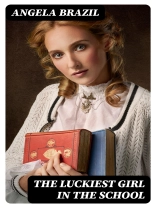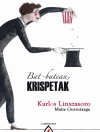In ‘The Luckiest Girl in the School, ‘ Angela Brazil masterfully weaves a narrative that captures the spirit of early 20th-century boarding school life. Through the eyes of her protagonist, the novel explores themes of friendship, ambition, and the transformative power of education, all couched in Brazil’s characteristic blend of humor and poignancy. The story is set against the backdrop of a richly evoked school environment, filled with vibrant characters and social dynamics that reflect the era’s gender norms, making it a quintessential example of the British schoolgirls’ fiction genre popular during that time. Angela Brazil, a pioneering author in girls’ fiction, drew upon her own experiences as a teacher and her keen observations of adolescent life to create a relatable and engaging narrative. Her background in education and her passion for writing informed her portrayal of the struggles and triumphs faced by young women in the early 1900s, situating her work within a broader context of women’s evolving roles in society. Brazil’s ability to intertwine personal growth with social commentary is a hallmark of her literary style. For readers seeking an insightful yet entertaining glimpse into the life of young women navigating friendship and ambition, ‘The Luckiest Girl in the School’ is a delightful read. Its enduring themes resonate with anyone who has ever felt both the weight of expectation and the thrill of possibility. Brazil’s nuanced characters and engaging plot make it a must-read for fans of classic literature and those interested in the dynamics of female friendships.
关于作者
Angela Brazil (1868–1947) stands as an iconic British author best known for pioneering the girls’ school story genre in the early 20th century. She crafted a new and engaging form of storytelling that departed from the didactic narratives prevalent in Victorian literature. Her novels often featured spirited heroines, camaraderie, and adventures set within the environs of boarding schools, which resonated strongly with young female readers of the era. Brazil’s work, including the notable ‘The Luckiest Girl in the School’, published in 1910, presented a blend of morality and entertainment, encouraging girls to be both principled and independent. Her literary style was characterized by lively dialogue, a sense of humor, and a portrayal of the characters’ inner lives, which contributed to the lasting appeal of her stories. Over the course of her prolific writing career, Brazil published nearly 50 novels, effectively creating a template for generations of school stories to come. Her contribution to children’s literature provided a new space for girls to see themselves as the protagonists of their own stories, and it is remembered for both its cultural impact and its role in the progression of juvenile fiction.












